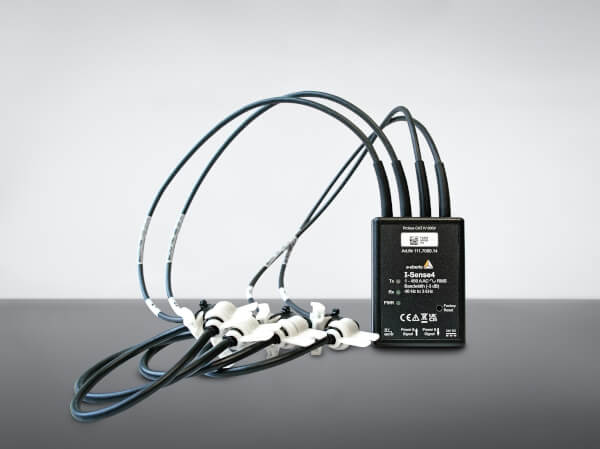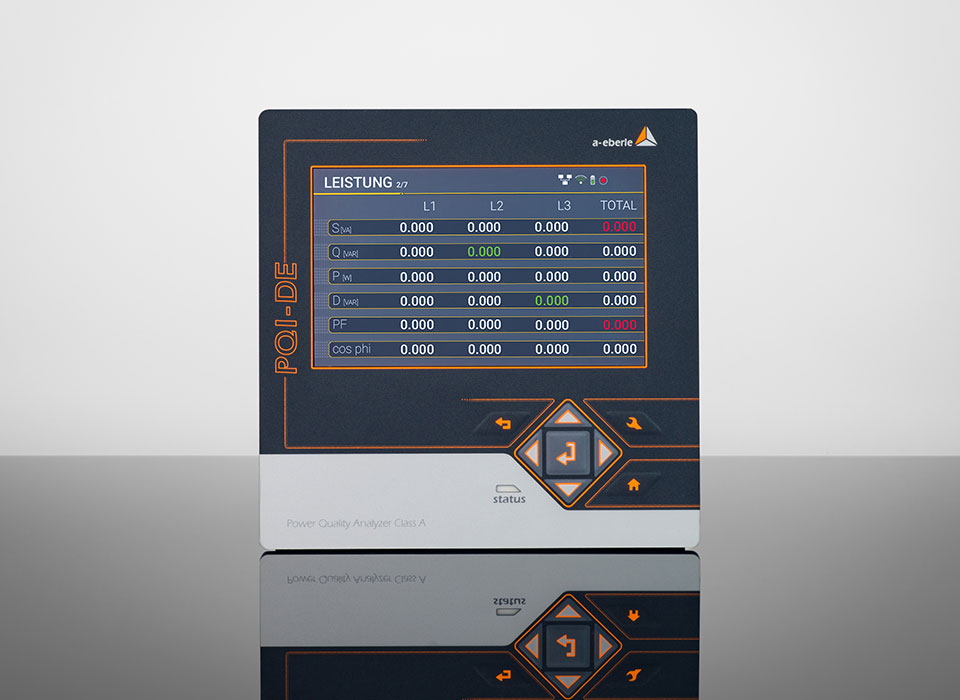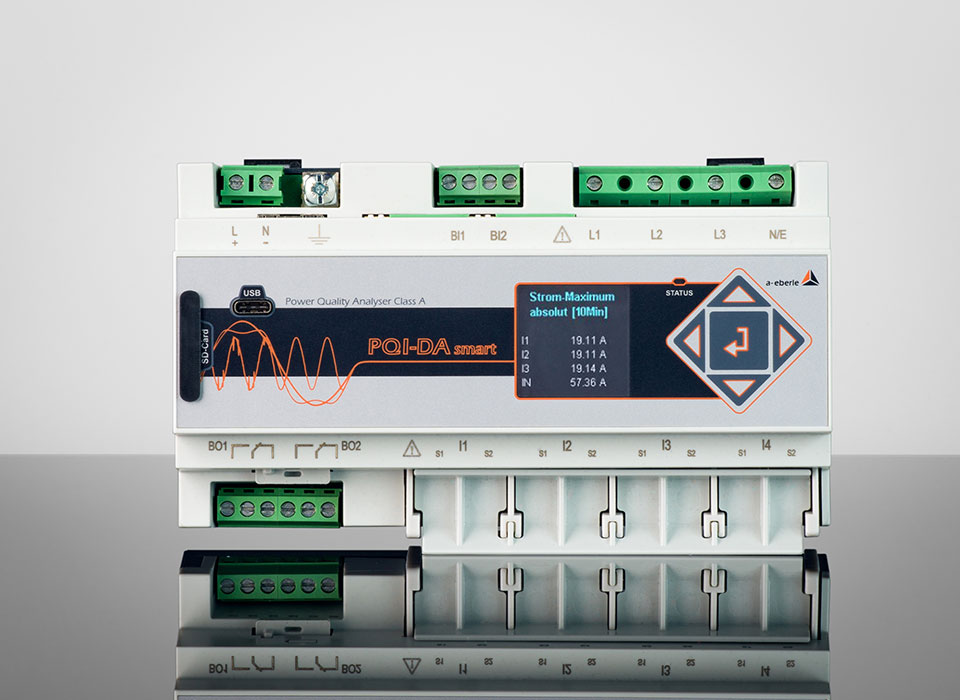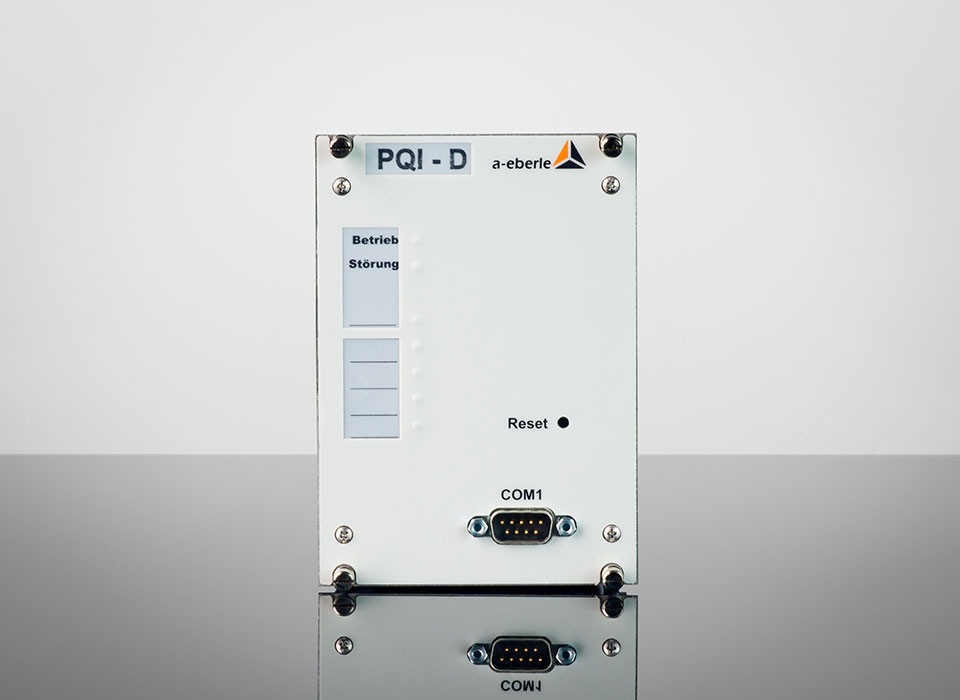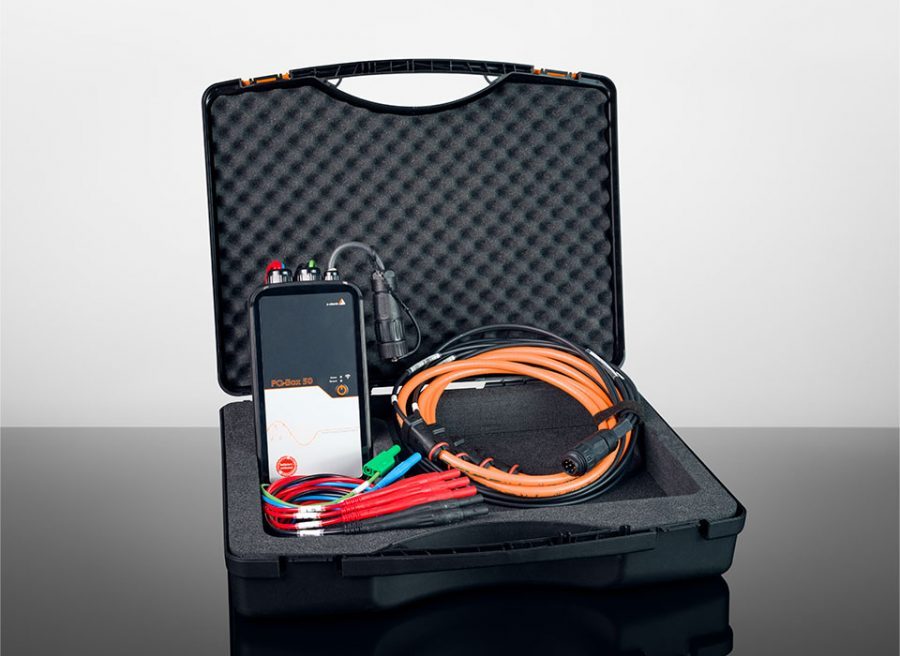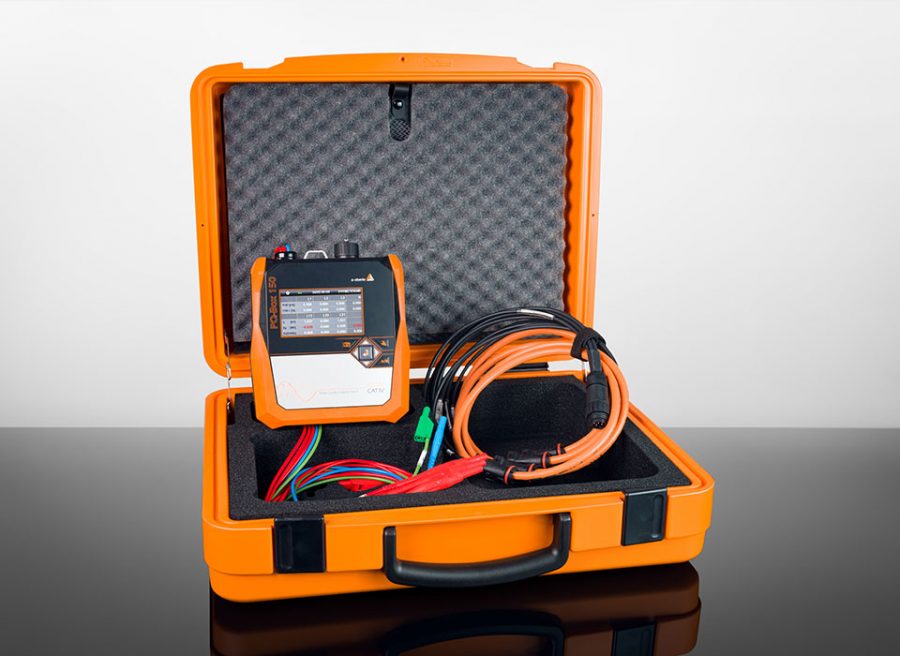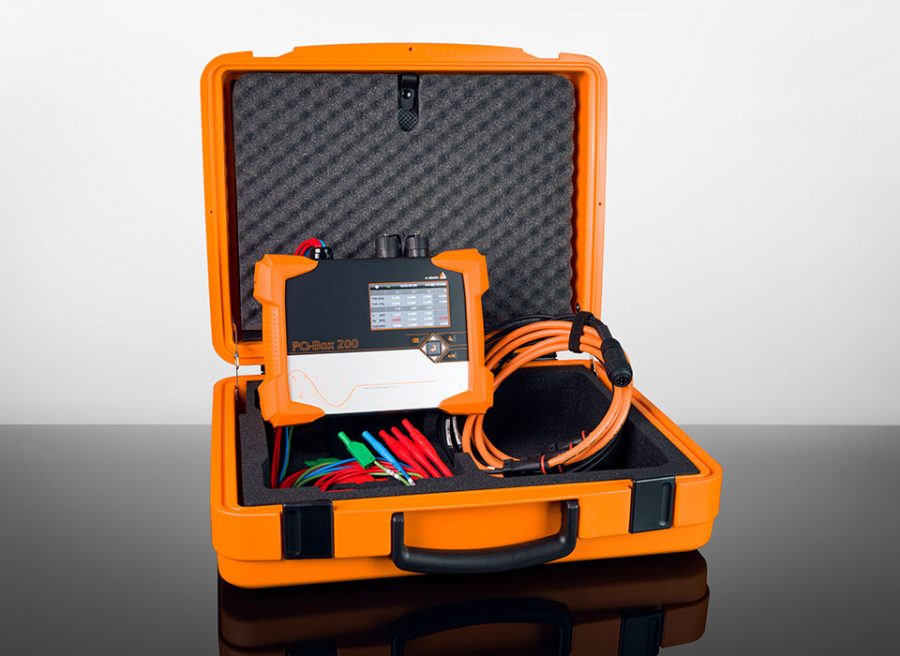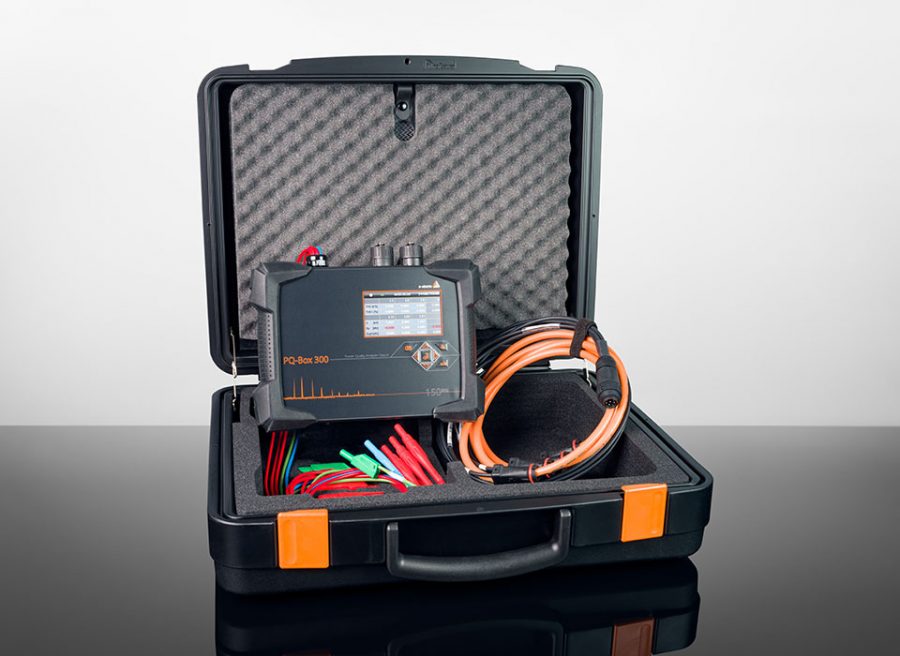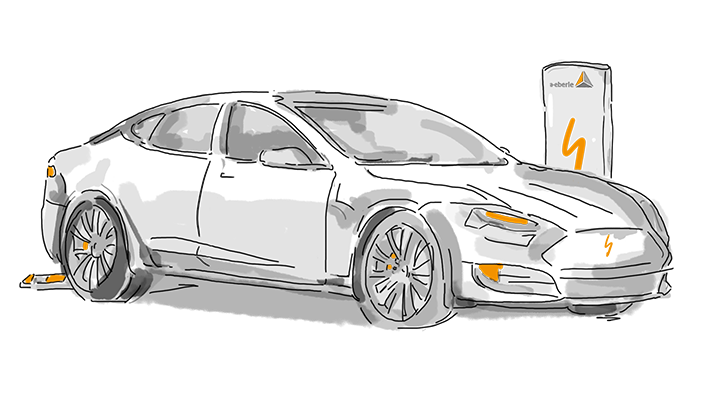
The challenge
The Technische Hochschule Bingen (THB) charged e-vehicles in parallel at ten charging points. What was of interest here was measuring the charging current and its effect on the THB network; to determine pulse frequencies and their distribution across the network and to assess network asymmetries. The evaluation determined that infringements of standards occurred only to a low level (i.e. that electricity quality had improved in recent years); that power quality should be observed more closely in future; and that charging electronics had to be improved. The study “power quality in electromobility” from 2013 determined that around a quarter of all e-vehicles measured in this project caused impermissible harmonic currents during the charging process [1].
Introduction
Today, charging technology in e-vehicles has markedly improved. Limits are much more regularly maintained. However, the most frequently infringed condition of connection is asymmetry in the single-phase charging of electric vehicles. In some cases, single-phase charging power up to 7 kW is reached here. In serially produced e-vehicles, almost no infringements arise, except when the charging electrics are defective. The greatest harmonic currents arise from converted e-vehicles. These happen when simple rectified circuits consisting of diodes with capacitive or inductive smoothing are used in a DC circuit. In an assessment to the VDN Technical rules, all relevant harmonic generators in a facility are collated with regard to the emissions to be expected at the shared network connection point. Here, the individual harmonic currents and the combined effect of all harmonics are considered through the distortion factor of the basic oscillation THD. To measure the voltage and current during the charging process, power quality analyzers and fault recorders made by A. Eberle, Nuremberg, are used. The sampling frequency of the PQ-Box 200 is 40.96 kHz, meaning DC frequencies up to 20 kHz can be recorded.
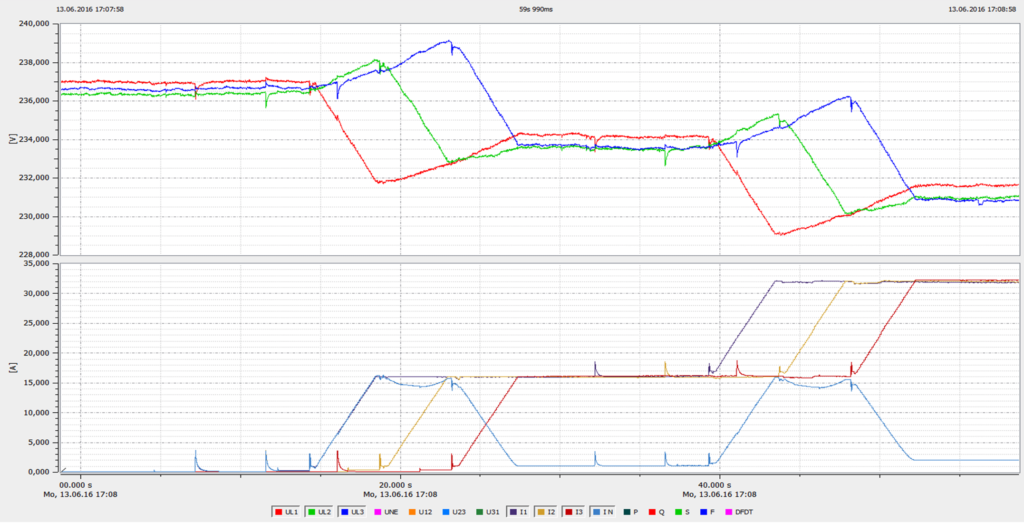
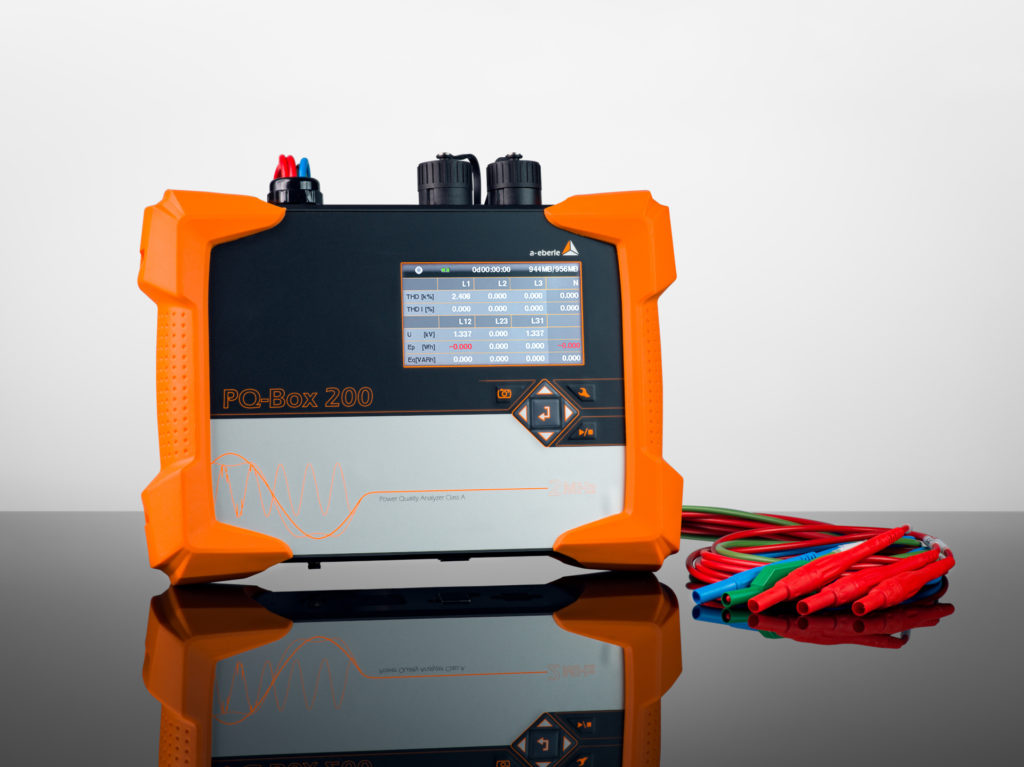
Conclusion
Some e-vehicles are charged on a single phase with a power much greater than 4.6 kVA – during the measurement campaign, up to 7.2 kVA was detected. The vehicles produce very differentiated switching frequencies. However, all the vehicles work as interference sinks, “extracting” this supraharmonic from the network. When switched on, all the vehicles generate a clear voltage transient. This could disturb other consumers. While the current harmonics of various e-mobility manufacturers do add up on the network, but not as strongly as a linear addition. No serial manufacturers infringe on the current harmonic limits up to the 50th harmonic.

